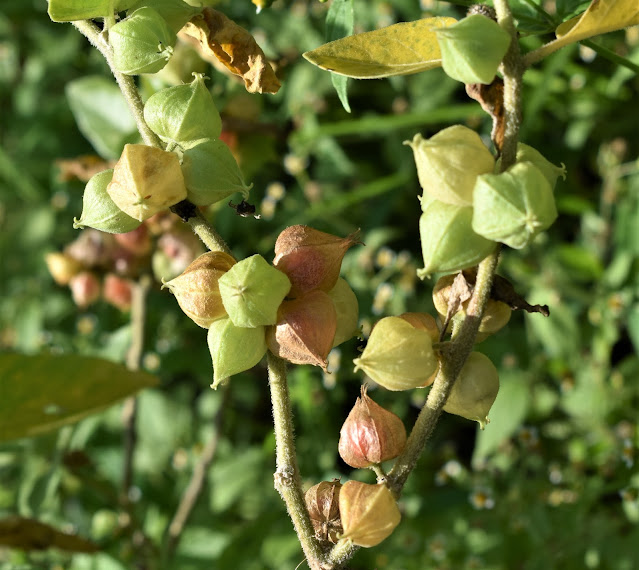Botanical name: Withania somnifera
(Etymology: Withania- on the name of English botanist, Henry Thomas
Maire Witham; somnifera- sleep-inducing, referring to narcotic properties of the
plant)
English names: Ashwagandha, Indian Ginseng, Poison Gooseberry, Winter Cherry
Indian names: Ashwagandha (Hindi, Marathi), Ashwagandha, Asgandh (Sanskrit), Amukkuram (Tamil), Vajigandha (Telegu), Kanchuki (Kannada), Ghodaasun (Gujrati), Amukkuram (Malayalam)
Family: Solanaceae
Chromosome No: 2n= 48 (x= 12)

Withania somnifera, commonly known as ashwagandha, is an important medicinal plant used in many Ayurvedic preparations. The roots (rarely berries) of this plant are used to prepare many different herbal medicines. It is native to the drier parts of India and can be seen growing naturally up to an altitude of 1,500 m. The Indian name, ashwagandha, is derived from the strong horse-like odour of the root.
BOTANICAL CHARACTERISTICS
Withania somnifera is a perennial undershrub. The stem is branched, and reaches about 1.5 m in height. All plant parts are covered with velvety and stellate tomentum. The branches are flexuous, terete and extend radially from the main stem. The leaves are dull green, elliptic, and usually up to 10-12 cm long. The flowers are small, greenish and bell-shaped. Fruit is a berry that remains covered with persistent papery sepals. Fruits are green initially but turn orange after ripening.

TRADITIONAL USES
Ashwagandha is used in Indian traditional systems of medicine for more than 4000 years. The roots, leaves, and fruits (berry) are reported to possess tremendous medicinal value. Many Ayurvedic rejuvenating preparations use ashwagandha as their key ingredient. It is supposed to help in maintaining proper nourishment of the muscles and bones. It is considered useful in maintaining the proper functioning of the adrenals and reproductive system.

CHEMICAL CONSTITUENTS
The roots contain essential oils, alkaloids and steroidal compounds. The steroidal compounds include the lactones Withaferin A and carbon-27-glycowithanolide (collectively known as the Withanolides). The Withanolides are responsible for the medicinal properties of ashvagandha. The main alkaloids include tropine, pseudotropine, isopelletrine, anaferine, somniferene, withanine and saponins, which are also active principles in this plant. Alkaloid percentage in roots ranges from 0.13 to 0.31%.
USE IN MODERN MEDICINE

Ashwagandha is used in many herbal drug preparations for tonic, arthritis, anxiety, insomnia, asthma, bronchitis, backache, fibromyalgia, menstrual problems, hiccups, and chronic liver diseases. The root powder is considered a good adaptogen to help the body cope with daily stress. Recently, it has found its use in drugs for improving thinking ability, brain power, fertility problems in men and women, decreasing pain and swelling (inflammation). Ashwagandha is an integral component of some Ayurvedic drugs such as Abana , Aller-G Care, Ashwagandha capsules, Dia-Beta Plus, Geriforte , Immunol, Joint Aid plus, Male Support Formula, Mentat, Oxitard, Reosto and Tentex forte.
CULTIVATION

Ashwagandha is mostly grown in drier parts in subtropical regions comprising of Rajasthan, Punjab, Haryana, Uttar Pradesh, Gujarat, Maharashtra and Madhya Pradesh. It is propagated through cuttings, division or seeds. Seeds are the best way to propagate them. It can be grown on any kind of soil which is not suitable for other commercial crops.
.JPG)






No comments:
Post a Comment